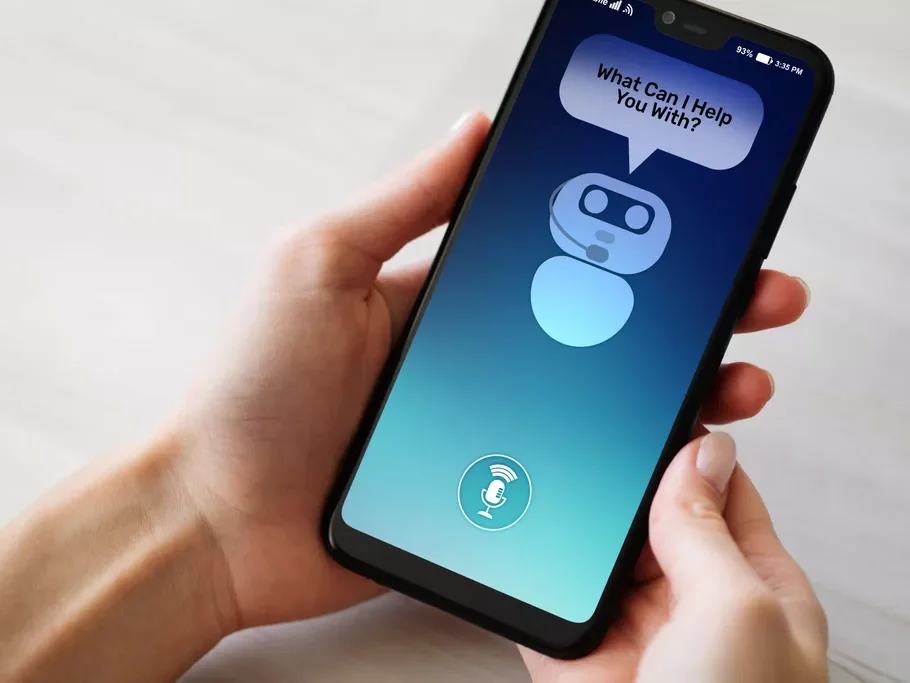When a person visits a website, whether an online store or a portfolio with a list of services, it’s crucial to prevent them from leaving soon, dissatisfied, and with many unanswered questions. People might need help with product selection advice and site navigation assistance. You might need to lead data collection to draw potential customers into the sales funnel or do market research to target advertising campaigns precisely.
All of these actions can be fulfilled with the help of the website’s chat. Still, in this instance, you will need genuine operators whose availability around the clock is an unheard-of luxury. Website chatbots can take on this role. In this article, you will find out what is a chatbot and the ways to use it in business.
What is a chatbot in simple words
Numerous business owners wonder about new technologies and want to know what is a chatbot definition. It is computer software that is designed to simulate human conversation, usually through text-based or voice-based interactions. It can respond to user queries, provide information, and perform automated tasks, such as booking tickets or ordering food.
This application is accessible around-the-clock, unlike online conversations on websites where live agents engage with you. While some services are based on AI and can recognize subtleties in questions or language and adapt to alterations, most services concentrate on common scenarios (scripts).
So, what is a chatbot used for? Developers design bots to reply to particular, oftentimes asked inquiries and provide clients with a quick method of communication. There are further, more advanced variations of such technology. Bots analyze consumer behavior and the agent’s initial encounters to forecast consumer behavior and give appropriate info. They facilitate quick access to sales, commerce, and client support while automating contact.
How chatbots work
Chatbots most frequently use the following components in their work:
- Arranging pattern. Virtual assistants group the content by forming the relevant response from consumers using the template’s conformance. Such samples’ conventionally organized model is an intelligence-grounded artificial language.
- Natural language understanding (NLU). It is the capacity to comprehend spoken and written words. This method transforms text into a database that is machine-structured. The three guiding concepts of NLU are subjects, context, and expectations.
There are generally two types of virtual assistants, basic and advanced. Simple ones use pre-written scripts. Only those requests that are in the script can receive answers from it. Usually, a chatbot does not need the help of a human. A person comes to the rescue if the user asks a question that virtual assistants cannot answer. Intelligent chatbots that are highly developed use AI. They understand live speech, not just specific commands. Such assistants can offer recommendations or anticipate users’ needs by continuously engaging with them and progressively learning about their preferences.

Primary chatbots’ advantages
Chatbots are an advanced technology that has many advantages. A chatbot’s key benefits are as follows:
- Immediate answers and no waiting times. Chatbots provide prompt and accurate responses. The user does not have to wait until the manager’s working day begins; the client’s request is considered because the chatbot provides all the results lightning fast.
- Data collection during communication. The program may assess the material presented to the user, how often it was shown, how the user responded, etc.
- Lead generation and qualification. The virtual assistant system can guide a customer from initial contact to order placement if you strategically construct a chain of replies.
Another significant benefit is that the bot is affordable. They are more cost-effective for businesses to deploy than hiring human resources. Like people, different virtual assistants may carry out various functions, from straightforward consulting to even placing orders and making payments on behalf of consumers.
Types of chatbots
Modern chatbots differ depending on their construction, purpose, and environment of the application. There are numerous kinds of virtual assistants:
- Scripted or quick chats. One of the most accessible and simple choices is this one. It functions according to the hierarchy of solutions theory. Via preset issues, communication with others takes place; it continues until the client’s queries are settled.
- Keyword-based chatbots. It is an improved fast-response virtual assistant that tries to understand the user and appropriately match them using keywords from the client’s responses. It combines set keywords with AI techniques to get relevant results.
- Hybrid bots. It is a blend of the menu- and keyword-based bots. If the keyword is unsuccessful, clients might select their menu options or obtain answers immediately.
- Conversational. These are the conversations that are information-focused and the most challenging. They engage and recall human interaction applying AI and ML techniques and apply these memories to develop. These bots evaluate visitor questions and word pronunciation while providing replies rather than focusing on keywords.
- Voice bots. They include human interaction in their operational solutions and original thinking processes. They are created by programmers utilizing speech recognition and text broadcasting APIs, such as Alexa with Amazon and Apple Siri.
Moreover, there are communicative and functional virtual assistants. As their name suggests, the first ones facilitate communication between the business and its clients. It uses canned responses to common queries, a callback option, or a referral to a real manager.
Full-featured mobile applications can be replaced with useful chatbots. Most apps already provide users with interactive actions and tailored responses in one window while also allowing users to search, consult, book, buy, and do banking activities.
Ways businesses implement chatbots
When trying to grasp what is a chatbot business, remember that companies may apply chatbots in the following ways:
- Consumer support. Sales departments may tailor assistants to reply to the most frequent questions.
- Restaurants. Customers may ask about the menu, reserve a table, and even place meal preorders through the chatbot.
- IT assistance. Virtual assistants can help in resolving the most frequent problems if users of an app or software encounter a system crash.
- Online retailers. Simple queries concerning a product’s attributes, pricing, delivery method, etc., can be helped by the application.
- Language schools. A virtual assistant makes learning a new language more automated. The program included within the messenger will daily deliver short assignments, new words, and phrases and verify their responses.
- Business chatbots. It may also be used by businesses to communicate internally.
- Psychological help. Virtual assistants can be set up to act as a person’s all-purpose attendant in challenging circumstances.
Each brand owner asks: what is a chatbot and why do I need one? They are one of the trendiest tools when creating auto sales funnels, which may enhance conversion by 40–80% and are based on various circumstances.
The dos and don’ts of using chatbots
When implementing a certain technology, it is worth paying attention to certain nuances. Consider such advice:
- To make conducting a conversation easy, provide buttons with answer choices.
- Use diplomatic alternatives to the refusal in place of negative responses.
- Use words and phrases that urge the bot to be contacted again at the end.
Moreover, some advice will enable you to enhance your virtual assistant. Don’t rely just on text. To keep users interested, refrain from responding to every inquiry in text alone. Add some interactive elements such as videos, product offers, and calls to action to make it simpler for customers to identify relevant items and services.
Do not quit working on the technology. Following the initial launch of your chatbot, you should continuously evaluate user activity and search for ways to improve it. After it is deployed, the work is not over. You could be amazed by how users engage with your bot, discover new ways to get knowledge and enhance your offering to clients.
Don’t forget to add uniqueness as well. For customers, first impressions may be crucial. A primary name and look on a bot can give your virtual assistant some personality.
Common examples
The next thing you need to know is what is a chatbot example. Famous instances include:
- A well-known clothing company, H&M, has created a chatbot that questions consumers about their fashion preferences and offers them several clothing possibilities. The bot creates a customer profile using the collected data to make product recommendations and facilitate their interaction with your brand.
- IKEA created an ORC virtual assistant to gather client information. More questions, easy replies and emoticons are added. The chatbot offers to share an email address with the user at the conclusion.
- A virtual assistant for selecting Lego presents. A chatbot named Ralph helps customers find the perfect gift by responding to their inquiries and considering the subject they have chosen for the purchase (travel, city building, adventures, etc.). Ralph is a member of the Facebook Messenger team on the official Lego page.
By building bots for your brand, you may improve the quality of contact with your clients, staff, and partners, automate repetitive processes, and open up new channels for marketing. You already know what virtual assistant you require, so why not use it to outperform competitors? If you want a team of experts to design the ideal chatbot for your company, choose MetaDialog. The specialists’ team is ready to help and meet all client’s needs.
